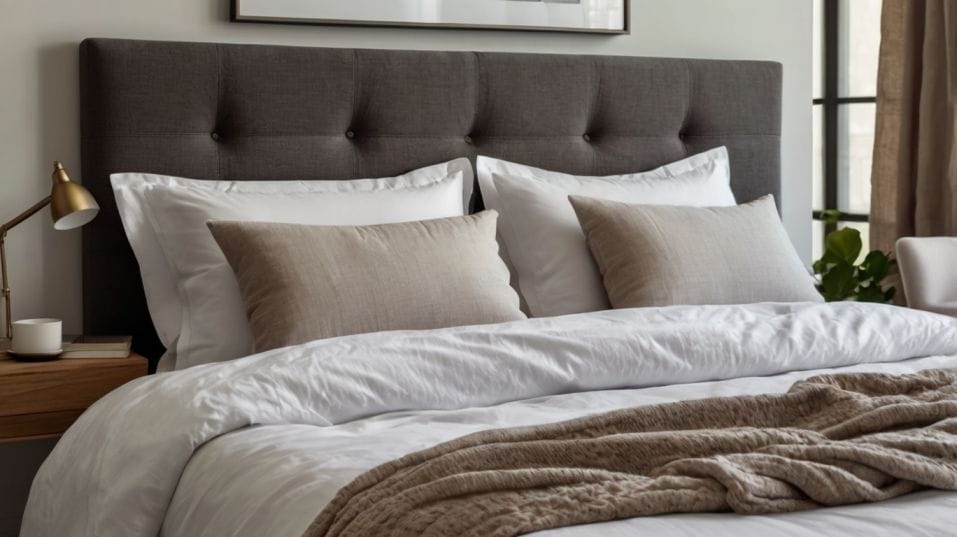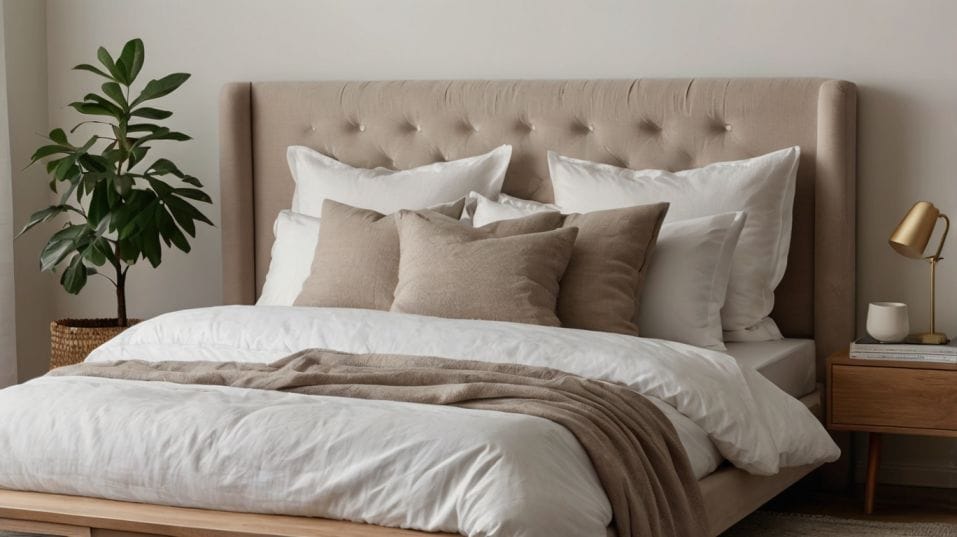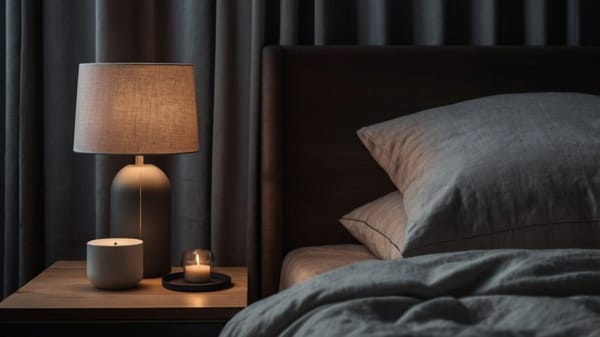How to Choose the Right Pillow for Deep Sleep
Still waking up tired? Discover how the right pillow can boost recovery, mental clarity, and energy—starting with your next night of sleep.

Ever wonder why you’re still waking up groggy—even after ditching screens and fixing your bedtime? The culprit might be right under your head.
A poorly matched pillow can ruin alignment, stress your neck, and block you from deep, restorative sleep.
But the right one? It unlocks better energy, clearer focus, and smoother mornings. Here’s how to find a pillow that actually works with your body—not against it—for sleep that finally pays off.
The Science Behind a Solid Pillow Choice
Deep sleep isn’t a luxury—it’s a biological reset. During this phase, your body repairs tissue, builds muscle, and clears neurological waste from your brain.
But to reach deep sleep consistently, your nervous system needs to stay relaxed. One of the fastest ways to sabotage that? A misaligned neck that sends subtle stress signals all night long.
Spinal alignment isn’t just about your mattress. It starts with your pillow. When your neck, shoulders, and head aren’t supported in a neutral position, your muscles work overtime trying to compensate.
That leads to micro-wakeups you won’t even remember. You’ll just feel groggy and unrefreshed in the morning—and never quite know why.
The right pillow helps prevent that. It locks in alignment, reduces pressure points, and keeps your airway open—all of which are essential for uninterrupted sleep and quality recovery.

Match Your Pillow to How You Sleep
Sleep position is your north star when choosing a pillow. Not what you think you do, but what you actually do for most of the night. Here’s how to tailor your choice based on how you typically sleep:
Side sleepers need a higher loft to fill the space between shoulder and head. Too flat, and your neck tilts downward all night. Look for a firmer, thicker pillow that maintains its shape under pressure.
Back sleepers benefit from medium support—thick enough to hold the head in line with the spine, but soft enough to avoid pushing the chin forward. Contoured pillows or dual-layer designs (softer center, firmer edges) work well here.
Stomach sleepers, you’re fighting an uphill battle. This position cranks your neck sideways for hours.
If you’re not ready to transition, use a very low-loft pillow or skip it altogether and sleep with just your arm under your head to reduce torque.
Combination sleepers—if you change positions a lot—need adaptable support. Pillows with shredded memory foam or adjustable fills let you mold and shift through the night without losing alignment.
Materials: Go Beyond the Hype
Pillow marketing is a minefield of buzzwords. Cooling. Memory foam. Orthopedic. Hypoallergenic. Strip it all away and focus on two things: support and breathability.
Memory foam offers consistent support and molds to your shape. It’s great for alignment but often traps heat unless it's gel-infused or ventilated.
Latex is responsive and naturally cooler. It resists flattening and offers bounce-back support, ideal if you shift positions or want a more buoyant feel.
Down and feather pillows feel luxurious but lack consistent support. Over time, they collapse and clump—bad news for your neck. Some modern hybrids mix down with foam cores for better structure.
Shredded foam pillows are ultra-adjustable. You can add or remove filling to fine-tune the loft. Look for models with a zippered case and washable components.
Gel-infused or cooling tech pillows aren't gimmicks if you're a hot sleeper. Temperature regulation matters. Even a 1–2 degree difference in skin temperature can impact sleep depth.
Pro tip: Don’t just squeeze a pillow in-store. Lay on it, mimic your sleep position, and see how your neck feels after a few minutes. This is about function, not fluff factor.
Size, Shape, and Ergonomics Matter More Than You Think
Standard pillows aren't built for standard bodies—because there’s no such thing. Your frame, shoulder width, and even mattress firmness all change how a pillow performs.
Broader shoulders? You need more loft. Petite frame? A tall pillow could overextend your neck. Firmer mattress? Go thicker—your body sinks less, so your pillow has more distance to bridge.
Consider contoured or cervical pillows if you struggle with neck stiffness or chronic tension. These shapes support the natural curve of your neck and can reduce snoring, jaw clenching, and even morning headaches.
Adjustable pillows are the most beginner-friendly. They let you test, tweak, and tailor without buying multiple pillows. You can modify the loft over time, which is a game-changer as your sleep habits evolve.
Breathability Isn’t Optional
Your pillow cradles your head, which means it holds heat—especially around the neck and face where thermoregulation is sensitive. If your head gets too warm, your body kicks into alert mode, pulling you out of deep sleep into lighter stages.
Cooling fabrics, mesh vents, and moisture-wicking covers help. So do natural materials like latex and buckwheat. Even the way the pillow is constructed—solid core versus shredded fill—affects airflow.
If you’re waking up sweaty, flipping the pillow often, or just sleeping hot in general, upgrading to a breathable design is one of the fastest fixes.
It’s Not Just About Night—It’s About Morning
Here’s the real test: how you feel after eight hours. If your pillow is doing its job, you’ll wake up without soreness, stiffness, or the need to crack your neck like bubble wrap.
You’ll notice:
- Clearer focus by mid-morning
- Better post-workout recovery
- Less jaw tension or face puffiness
- Fewer position changes at night
- Stronger, more stable energy throughout the day
None of this happens overnight. Your body might need 7–10 days to adjust to a better pillow. Don’t rush the verdict. But stay honest. If it’s not improving how you feel in the real world, it’s not the right tool.
Maintenance: Extend the Life of a Great Pillow
Even the best pillow degrades. Oils, sweat, and compression wear down support over time. A solid pillow protector helps reduce buildup, and airing it out weekly can reset shape and freshness.
Replace your pillow every 18–36 months depending on material. If it smells, clumps, or refuses to bounce back—it’s done.
And don’t forget: your pillow’s performance is tied to your mattress. If your bed is too soft or sagging, even a perfect pillow can’t fully compensate.
Final Thoughts
Your pillow is the unsung hero of deep sleep. Get it right, and your body recovers faster, your brain functions sharper, and mornings stop feeling like a battle.
Choose one that supports your sleep position, matches your body, and keeps cool under pressure. Forget what feels plush in the store—go with what aligns, adapts, and performs.
Start now. Audit what you're sleeping on. Try something new. Your energy, focus, and daily edge all begin the moment your head hits the right pillow. Upgrade it, and watch everything else follow.




